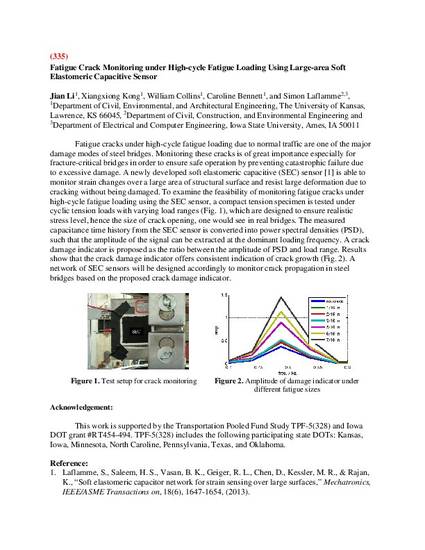
Fatigue cracks under high-cycle fatigue loading due to normal traffic are one of the major damage modes of steel bridges. Monitoring these cracks is of great importance especially for fracture-critical bridges in order to ensure safe operation by preventing catastrophic failure due to excessive damage. A newly developed soft elastomeric capacitive (SEC) sensor [1] is able to monitor strain changes over a large area of structural surface and resist large deformation due to cracking without being damaged. To examine the feasibility of monitoring fatigue cracks under high-cycle fatigue loading using the SEC sensor, a compact tension specimen is tested under cyclic tension loads with varying load ranges (Fig. 1), which are designed to ensure realistic stress level, hence the size of crack opening, one would see in real bridges. The measured capacitance time history from the SEC sensor is converted into power spectral densities (PSD), such that the amplitude of the signal can be extracted at the dominant loading frequency. A crack damage indicator is proposed as the ratio between the amplitude of PSD and load range. Results show that the crack damage indicator offers consistent indication of crack growth (Fig. 2). A network of SEC sensors will be designed accordingly to monitor crack propagation in steel bridges based on the proposed crack damage indicator.
Available at: http://works.bepress.com/simon_laflamme/22/
